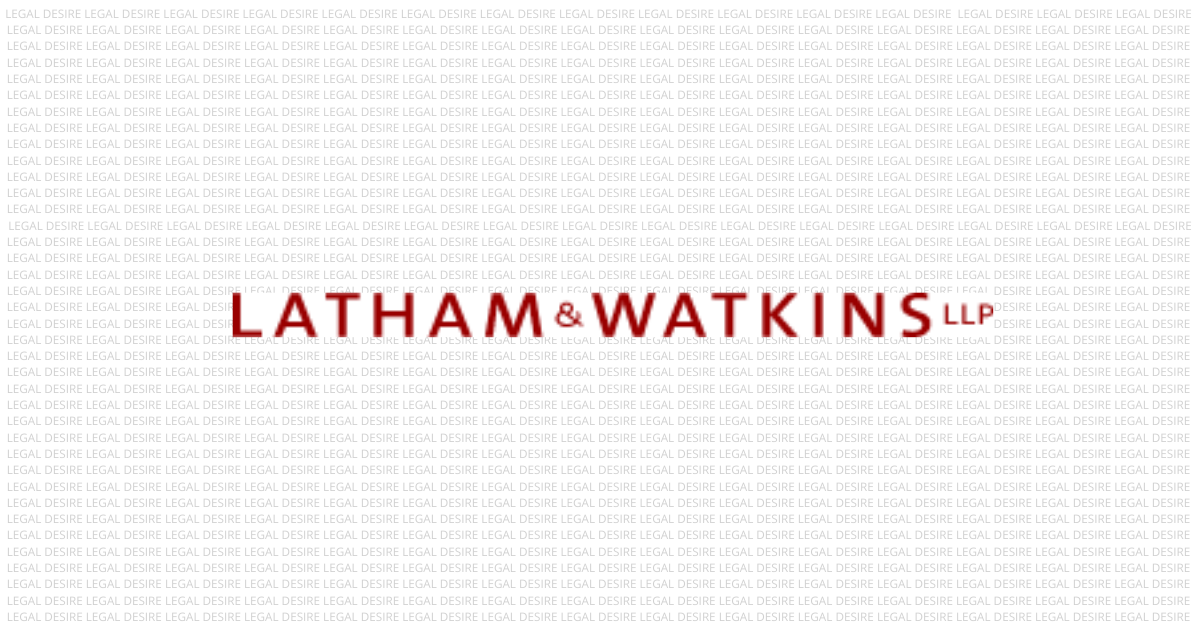Now Reading: Framing the Truth: Navigating the Admissibility of Security Camera Footage in Court
-
01
Framing the Truth: Navigating the Admissibility of Security Camera Footage in Court

Framing the Truth: Navigating the Admissibility of Security Camera Footage in Court
In the age of surveillance, security cameras have become an ubiquitous presence in our daily lives, capturing every moment, every movement, and every detail. From convenience stores to city streets, these silent witnesses are always watching, always recording.
But when it comes to proving a case in court, the footage they capture can be a double-edged sword. While security camera footage can provide crucial evidence, its admissibility in court is not always a guarantee. In fact, the road to getting security camera footage accepted as evidence can be fraught with legal hurdles, technical challenges, and procedural pitfalls.
In this post, we’ll delve into the complexities of navigating the admissibility of security camera footage in court, exploring the legal frameworks, technical requirements, and best practices that can make all the difference in the outcome of a case. Whether you’re a legal professional, law enforcement officer, or simply a business owner looking to protect your assets, this guide will provide you with the knowledge and insights you need to frame the truth and ensure that justice is served.
The Evolution Of Security Camera Technology And Its Impact On Evidence
The rapid advancement of security camera technology has revolutionized the way we capture and present evidence in court. Gone are the days of grainy, low-resolution footage that was often deemed inadmissible due to its poor quality. Today, high-definition cameras with advanced features such as night vision, motion detection, and facial recognition have become the norm. This surge in technological capabilities has significantly increased the reliability and accuracy of security camera footage, making it a crucial component in criminal investigations and trials.
The proliferation of IP cameras, which can transmit footage over the internet, has also enabled real-time monitoring and remote access to footage. This has streamlined the process of collecting and analyzing evidence, allowing law enforcement agencies to respond quickly to crimes and investigators to build stronger cases. Furthermore, the development of digital storage solutions has eliminated the need for physical tapes, making it easier to store, retrieve, and manage large amounts of footage.
However, as the technology continues to evolve, so do the challenges associated with its admissibility in court. The increased reliance on digital evidence has raised concerns about the potential for tampering, data corruption, and authentication issues. As a result, it is essential for legal professionals, investigators, and security experts to stay abreast of the latest developments in security camera technology and understand the legal implications of presenting this evidence in court. By doing so, they can ensure that the footage is properly collected, preserved, and presented in a manner that meets the rigorous standards of admissibility.
Understanding The Rules Of Evidence: A Primer On Admissibility
When it comes to presenting security camera footage in court, understanding the rules of evidence is crucial. The admissibility of security camera footage is not a guarantee, and it’s essential to navigate the complex landscape of evidence rules to ensure that your footage is deemed admissible. In the United States, for instance, the rules of evidence are governed by the Federal Rules of Evidence (FRE), which provide guidelines for what constitutes admissible evidence in court.
At its core, the admissibility of security camera footage hinges on its relevance, reliability, and authenticity. The footage must be relevant to the case at hand, meaning it must have a direct bearing on the issues being disputed. Additionally, the footage must be reliable, meaning it must be trustworthy and free from tampering or alteration. Finally, the footage must be authentic, meaning it must be what it claims to be – in this case, a genuine recording of the events in question.
To ensure admissibility, it’s essential to establish a clear chain of custody, documenting every step of the footage’s handling, from recording to presentation in court. This includes verifying the camera’s calibration, maintenance, and storage procedures, as well as the actions of everyone who has handled the footage. By understanding the rules of evidence and taking the necessary steps to establish the admissibility of security camera footage, you can increase the chances of having your footage accepted as evidence in court.
Authentication: The First Hurdle In Admitting Security Camera Footage
When it comes to presenting security systems Kansas City footage as evidence in court, the first and often most crucial hurdle to clear is authentication. This is the process of verifying that the footage is genuine, unaltered, and accurately reflects the events it purports to show. In other words, the court needs to be convinced that the footage is what it claims to be – a truthful and reliable recording of the incident in question.
Authentication is a critical step because security camera footage can be easily manipulated, edited, or tampered with. Without proper authentication, the opposing party can raise doubts about the footage’s integrity, potentially rendering it inadmissible as evidence. To overcome this hurdle, it’s essential to establish a clear chain of custody, documenting every step of the footage’s collection, storage, and handling. This includes identifying the person who operated the camera, the device used to record the footage, and the methods employed to transfer and store the data.
Moreover, the authentication process may involve expert testimony to verify the footage’s technical aspects, such as the camera’s resolution, frame rate, and time-stamping. The goal is to demonstrate that the footage has not been altered or tampered with in any way, and that it accurately reflects the events it captures. By successfully authenticating the security camera footage, you can increase its chances of being admitted as evidence and strengthen your case in court.
Chain Of Custody: Preserving The Integrity Of The Footage
When it comes to presenting security camera footage as evidence in court, the chain of custody is a crucial aspect that can make or break the admissibility of the footage. The chain of custody refers to the meticulous documentation of every step involved in the handling, storage, and transfer of the footage, from the moment it’s captured to the moment it’s presented in court. This includes who handled the footage, when, and how it was stored, as well as any copies or transfers made.
Think of it like a delicate thread that must remain unbroken. If the chain of custody is compromised at any point, the integrity of the footage is called into question, and the court may deem it inadmissible. This is because the opposing party may argue that the footage has been tampered with, altered, or manipulated in some way, casting doubt on its reliability.
To maintain the chain of custody, it’s essential to establish clear procedures for handling and storing security footage, including designating a secure location for storage, limiting access to authorized personnel, and using secure digital storage media. Additionally, every step of the process should be thoroughly documented, including dates, times, and the identities of those involved. By doing so, you can ensure that the footage remains intact and its authenticity is beyond reproach, ultimately strengthening its admissibility in court.
The Role Of Expert Testimony In Authenticating Security Camera Footage
When it comes to presenting security camera footage in court, the authenticity of the footage is crucial to its admissibility. However, simply submitting the footage itself is often not enough to establish its reliability. This is where expert testimony comes into play. A qualified expert can provide crucial context and validation, helping to bridge the gap between the footage and its acceptance as evidence.
Expert witnesses, such as forensic video analysts or digital evidence specialists, can testify to the authenticity of the footage, verifying that it has not been tampered with, altered, or manipulated in any way. They can also provide insight into the technical aspects of the security camera system, including the camera’s resolution, frame rate, and storage capabilities. Furthermore, experts can analyze the footage itself, enhancing or clarifying images, and providing a detailed explanation of what the footage depicts.
In addition, expert testimony can help to address any potential issues with the footage, such as gaps in the recording, inconsistencies in the timestamp, or anomalies in the video quality. By providing a thorough and objective analysis of the footage, expert witnesses can help to establish the credibility of the evidence, increasing the likelihood of its admissibility in court. Ultimately, the role of expert testimony in authenticating security camera footage is essential in ensuring that the evidence presented is reliable, trustworthy, and worthy of consideration by the court.
Resolution, Quality, And The Significance Of Video Enhancement
When it comes to security camera footage, the resolution and quality of the recording can make all the difference in its admissibility in court. A high-definition video with crystal-clear images can be a powerful piece of evidence, while a grainy, low-resolution recording may be deemed inadmissible due to its lack of clarity. In today’s digital age, it’s not uncommon for security cameras to capture footage in 4K or even higher resolutions, providing a level of detail that can be crucial in identifying individuals, vehicles, or other key elements of a crime.
However, even with high-quality footage, there may be instances where the video requires enhancement to bring out specific details. This is where video enhancement techniques come into play. By using specialized software and algorithms, forensic experts can improve the clarity and visibility of the footage, making it easier to analyze and interpret. This can be particularly important in cases where the footage is critical to the prosecution’s case, but the original recording is of poor quality.
For example, in a case involving a burglary, the security camera footage may be the only evidence linking the suspect to the crime. If the footage is blurry or pixelated, it may be difficult to identify the suspect or make out key details such as the license plate number of the getaway car. By enhancing the video, forensic experts can improve the resolution and clarity, making it possible to identify the suspect or retrieve crucial information that may have been obscured in the original recording.
The Impact Of Compression And Formatting On Admissibility
When it comes to security camera footage, the process of compression and formatting can have a significant impact on its admissibility in court. Compression, which is used to reduce the file size of video recordings, can sometimes compromise the quality of the footage, making it difficult to discern crucial details. This can lead to questions about the authenticity and reliability of the evidence, potentially rendering it inadmissible.
Furthermore, the formatting of the footage can also play a critical role in its admissibility. For instance, if the footage is not in a standard format, such as AVI or MP4, it may not be compatible with the court’s playback systems, causing technical difficulties during trial. Additionally, if the footage has been edited or altered in any way, it may be deemed inadmissible due to concerns about tampering or spoliation.
In order to ensure the admissibility of security camera footage, it is essential to maintain a clear and unbroken chain of custody, documenting every step of the recording, storage, and transfer process. This includes using high-quality cameras, storing the footage in a secure and tamper-evident format, and ensuring that any editing or enhancement is done by a qualified expert. By taking these precautions, legal professionals can increase the likelihood that the footage will be deemed admissible and ultimately help to build a stronger case.
Time-Stamping And Date-Stamping: Ensuring The Accuracy Of Footage
When it comes to presenting security camera footage as evidence in court, accuracy is of the utmost importance. One crucial aspect of ensuring the reliability of footage is the presence of accurate time-stamping and date-stamping. This may seem like a minor detail, but it can make all the difference in the admissibility of the footage. Imagine presenting footage that appears to show a crucial piece of evidence, only to have the opposing counsel challenge the timing of the recording, casting doubt on the entire case. Without reliable time-stamping and date-stamping, the footage can be deemed inadmissible, and the entire case can be compromised.
Inaccurate time-stamping and date-stamping can occur due to a variety of reasons, including incorrect camera settings, faulty equipment, or even intentional tampering. It is essential to ensure that the cameras are properly synchronized and that the footage is correctly time stamped and dated. This can be achieved through regular maintenance and calibration of the cameras, as well as implementing a robust quality control process to detect any discrepancies.
By prioritizing the accuracy of time-stamping and date-stamping, law enforcement agencies and businesses can ensure that their security camera footage is reliable and admissible in court. This not only strengthens the case but also maintains the integrity of the legal process. In the pursuit of justice, accuracy is paramount, and attention to detail is crucial in framing the truth.
The Admissibility Of Footage From Private Vs. Public Sources
When it comes to the admissibility of security camera footage in court, the origin of the footage can play a significant role. Footage from private sources, such as residential or commercial security cameras, may be subject to different rules and regulations than footage from public sources, like traffic cameras or surveillance cameras installed in public spaces.
In general, footage from private sources may be more susceptible to challenges regarding its admissibility, as it may be seen as more intrusive or potentially violative of individuals’ privacy rights. For example, if a security camera installed on a private residence captures footage of a crime committed on a neighboring property, the defendant may argue that the footage was obtained illegally or invasively. On the other hand, footage from public sources is often considered more neutral, as it is typically installed for the purpose of promoting public safety and is not targeted at specific individuals.
However, even footage from public sources is not immune to challenges. The quality of the footage, the presence of any audio recordings, and the circumstances surrounding the capture of the footage can all impact its admissibility. Furthermore, if the footage is obtained through a public-private partnership, such as a surveillance camera installed by a private company but monitored by law enforcement, the lines between public and private sources can become blurred.
Ultimately, the admissibility of security camera footage from private vs. public sources will depend on the specific circumstances of the case and the laws of the jurisdiction in which the case is being tried. It is essential for legal practitioners to carefully consider the origin of the footage and the potential challenges that may arise when seeking to admit it as evidence in court.
Best Practices For Law Enforcement And Security Professionals
When it comes to the admissibility of security camera footage in court, law enforcement and security professionals play a crucial role in ensuring that the evidence is collected, preserved, and presented in a manner that meets the legal standards. To increase the chances of securing a conviction, it is essential to follow best practices that guarantee the integrity and authenticity of the footage.
First and foremost, it is vital to establish a clear chain of custody, documenting every step of the evidence collection process, from the initial recording to the final presentation in court. This includes maintaining a detailed log of who handled the footage, when, and how it was stored and transferred.
Additionally, law enforcement and security professionals should ensure that the security cameras are properly installed, maintained, and calibrated to provide high-quality footage that is clear, concise, and relevant to the case. This includes regular checks on the cameras’ functionality, resolution, and field of view to guarantee that they are capturing the most relevant evidence.
Furthermore, it is essential to have a standardized protocol in place for collecting, storing, and analyzing the footage, including the use of specialized software and equipment to enhance and authenticate the video. This helps to prevent any potential tampering or alteration of the evidence, which can be a critical factor in determining the admissibility of the footage in court.
By following these best practices, law enforcement and security professionals can significantly increase the probative value of security camera footage, ultimately helping to ensure that justice is served and that criminals are held accountable for their actions.
Conclusion
As we conclude our journey through the complex landscape of admissibility of security camera footage in court, it’s clear that the path to success is fraught with potential pitfalls and legal landmines. From ensuring the integrity of the recording device to meeting the stringent standards of authentication and relevance, the process of introducing security camera footage as evidence is a delicate balancing act.
However, by understanding the legal framework that governs the admissibility of such footage, and by taking proactive steps to ensure that your security cameras are installed, maintained, and operated with an eye towards potential future legal proceedings, you can significantly increase the chances of getting your footage admitted into evidence.
Ultimately, the successful navigation of these complexities requires a deep understanding of the legal nuances involved, as well as a commitment to best practices in the collection, preservation, and presentation of security camera footage. By following the guidelines outlined in this article, you can help ensure that your security camera footage is not only admissible in court, but also effective in telling the story of what really happened.
Photo Source: https://www.pexels.com/photo/two-person-standing-under-lot-of-bullet-cctv-camera-374103/









